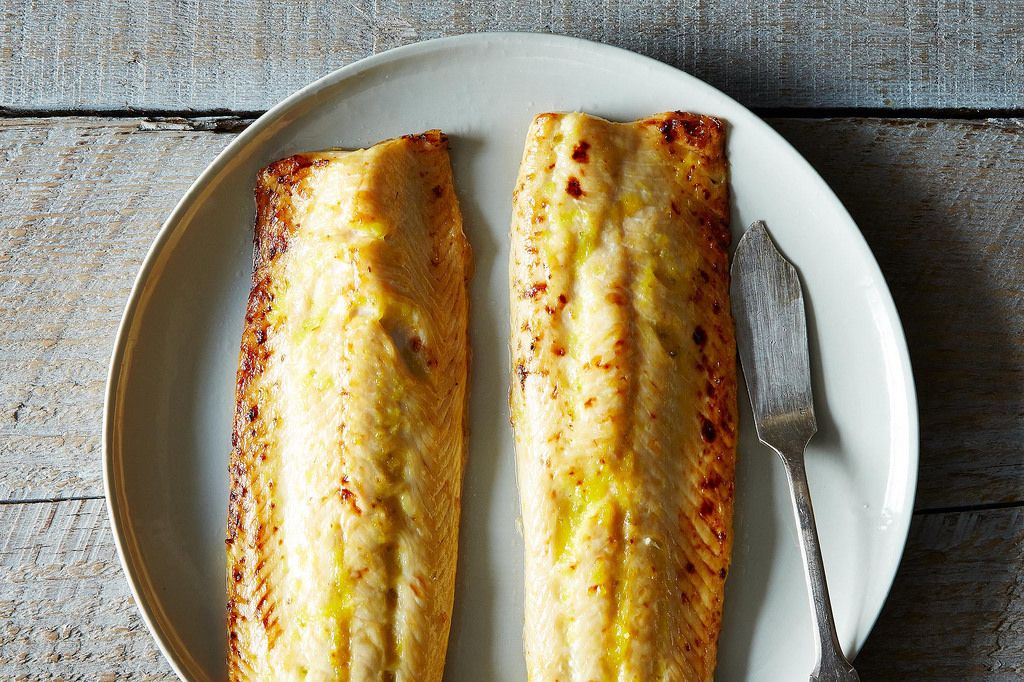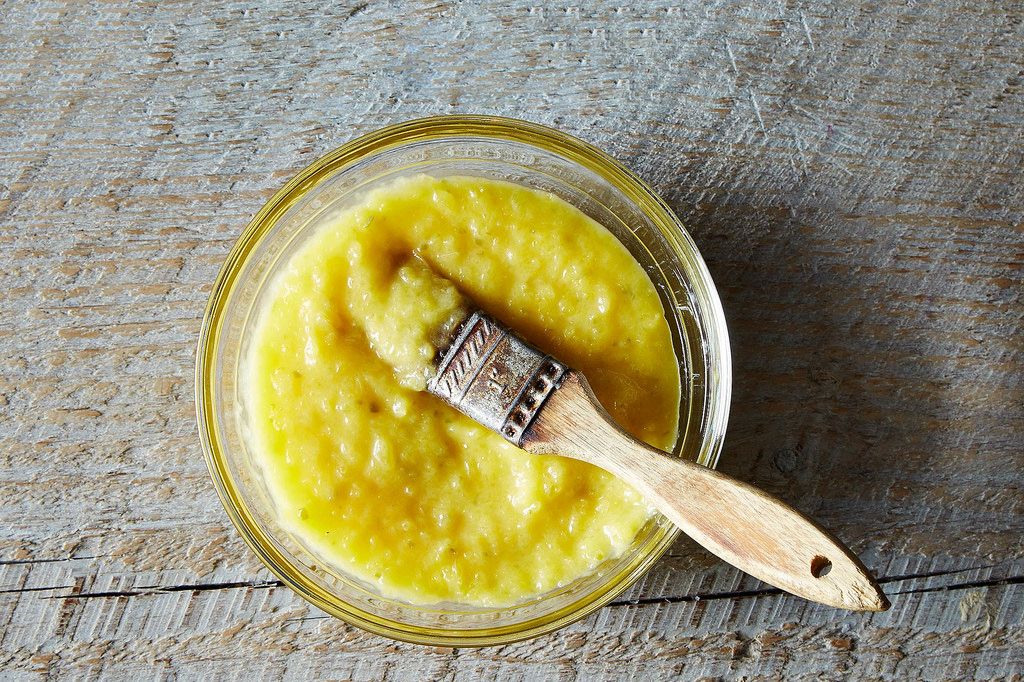This summer, Christine Burns Rudalevige of The Family Fish Project is on a mission to help us cook and eat more seafood at home.
Today: Get the secrets to giving your fish a good glaze, two ways.

There is more than one way to glaze a piece of fish. There are two basic ways, actually.
There is the sealant method, pictured here (think teriyaki), where a glaze made up of balanced sweet, salty, and spicy elements gets applied at the tail end of cooking fattier fishes like salmon, Arctic char, trout, and mackerel.
And then there is the mayo slather, where a zippy mayonnaise gets spread on potentially drier fishes like swordfish and halibut steaks on the grill, and on flakey white fishes in the oven. The end game is the same for both methods: a pretty sheen and flavor-infused fish.

To get to a good sealant glaze, think balance and flow. Here are some tips to get you started:
-
Glazes should not be subtle on the tasting spoon. You will only be brushing a thin layer of glaze on the fish, so push the heat, salt, and sweetness to the point where just a fingerful makes your taste buds jump.
- An easy way to get the right balance between sweet and hot in a glaze is to use your favorite pepper jam in the mix.
- Booze is a good addition to any glaze, but only as another flavor element. To thin a glaze to the right viscosity -- which should pour off a spoon like cold maple syrup -- use warm water. The glaze should be watery enough to spread on your fish like a first coat of nail polish.
-
Add a little fat, but not too much. The teaspoon of butter in my Bourbon Peach Serrano Glaze below simply smooths out the flavors. Adding more butter, olive oil, or sesame oil will affect how the glaze sticks (or doesn’t stick) to your fish.
-
Brush on the glaze late in the game. Given the sugar content in most glazes, applying it too early in the cooking process means the glaze will be black and burned before the fish is cooked through.

To get a good mayo slather, understand the limitations of what the flavor carrier can and can’t pull off.
-
Use full-fat mayonnaise, as low-fat ones melt too quickly. Full-fat mayo provides a slow release of fat and flavor into the fish.
- For the purpose of a glaze, mayonnaise can hold savory additions like sriracha, mustard, ginger, garlic, soy sauce, and grated Parmesan cheese. But stirring any more than a tiny amount of sugar into mayo breaks it down. Putting fruit salsas on the plate next to mayo-glazed fish is a good way to include a sweet element.
-
Don’t lay it on too thick. A glaze made with two tablespoons of mayonnaise, plus your savory additions, is enough to coat four 5-ounce fillets.
-
Don’t tell mayo haters it’s in the mix; they’ll never know anything other than the fact that they are eating moist, flavorful fish.

Baked Arctic Char with Bourbon, Peach, and Serrano Glaze
Serves 4
2 whole peaches, peeled, pits removed, and mashed (about 1 cup)
1/2 cup sugar
Juice of half a lemon
1 to 2 teaspoons minced serrano chiles
1 teaspoon unsalted butter
1 tablespoon good bourbon
2 to 4 tablespoons warm water
Salt and freshly ground pepper
Two 1-pound, skin-on Arctic char fillets
See the full recipe (and save it and print it) here.
Sriracha Lime Mayonnaise-Glazed Swordfish
Serves 4
Four 6-ounce swordfish steaks (about 1 inch thick)
2 tablespoons full-fat commercial mayonnaise
1 to 2 teaspoons sriracha
1 teaspoon finely minced garlic
1 teaspoon lime zest
1 tablespoon lime juice
1/2 teaspoon kosher salt
Canola oil
See the full recipe (and save it and print it) here.
Photos by James Ransom





See what other Food52 readers are saying.